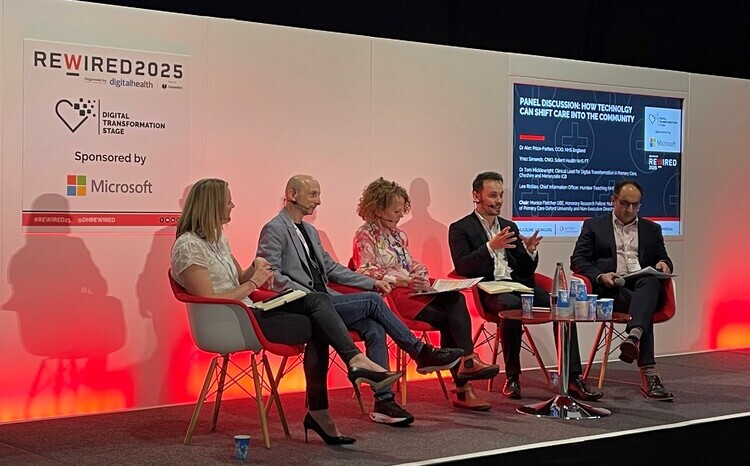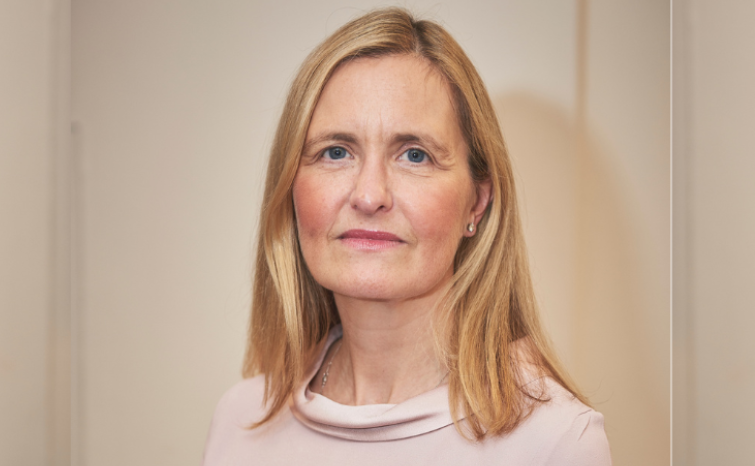The data layer vision is achievable, but it won’t happen overnight
- 15 July 2021

In March 2020, the then health secretary, Matt Hancock said he was looking at creating “a consistent data platform” which would see patient data separated from the application layer. Richard Strong, vice president and managing director of Allscripts, explores why this data layer vision is possible, but it might take some time.
Now that the dust has settled around the major announcement made at Digital Health Rewired, like every other major EPR supplier working with the NHS, we have had time to consider the practicality of ‘separating the application from the data layer’. Many of us have been wondering if the former Secretary of State (SoS), Matt Hancock was just paying lip service to the CIO audience, many of whom are largely frustrated by poor interoperability and continuous data lock-in, but now that it has been reiterated in the Data Strategy, it feels like the impetus is finally there (even though Hancock is not!).
An Uber style disruption?
The initial announcement created a huge buzz and speculation that disruption to the EPR market could finally be coming of age. Since then, all eyes have turned to the larger EPR providers, many of whom have a one size fits all approach, to see if, how and when they will move to an open way of working — a way of working that not only has the potential to make the UK a space for innovators to flourish, but that would benefit the entire health and care system.
Of course, the timing of this announcement was no coincidence — the pandemic has not only accelerated digital adoption but also created an unquestionable demand for data driven analytics. This, combined with the effectiveness of the ICS landscape being contingent on the ability of systems to be interoperable, has created the perfect storm for change. On top of that, we’ve started to see more examples of collaboration, demonstrating the scale of innovation and change that can be achieved with everyone pulling in the same direction.
However, with patient data commonly being held by EPR suppliers, who often have entire business models built around being a guardian of patient data, there’s a clear barrier to accessing it and using it for good. In a practical sense, this means that data is not always available and that it can’t be properly shared, providing a barrier to research and innovation, and hampering the life-saving role that data can play in promoting patient safety. To redress the balance, there needs to be a step-change in the architecture of our clinical and administrative systems — one that is open, transparent, and interoperable — and so taking power away from single vendor systems that ‘lock in’ data and, instead, storing it in the cloud makes perfect sense, even if it will be a challenge for some.
Is there substance in the strategy?
While many of us agree that we need to separate the data layer, question marks remain over whether or not it will actually happen. After all, we heard similar proposals from Hancock when he first came into post, which never came to fruition, and with a new SoS — with possibly the most treacherous in-tray of any UK politician — even the basic concept of data separation is likely to be completely off his radar. But there is reason to be optimistic.
Savid Javid’s background reaches back to being a Secretary of State for Housing, Communities and Local Government – so with a budgetary eye from his days as the Chancellor combined with an understanding of the need for better data and systems for social care reform, the notion may sit well with his thinking (not to mention he’s previously been involved in advising an AI company that operates in healthcare).
We have already seen positive steps taking it from an idea to a commitment with the new government strategy, Data Saves Lives, starting to give more detail about how the data needs to be accessed and updated, not just by multiple third parties but by NHS systems. The baby steps of trying this with diagnostic systems first will hopefully demonstrate value and buy-in to move forward with a stronger approach.
What needs to be done?
To achieve the vision for the use of digital in the NHS, the centre needs to engage with CIOs and suppliers across the entire health and care community for advice on how to approach the project, taking into consideration the varying pain points and requirements that may come as a result. Looking back at past digital transformation programmes in the NHS, such as the National Programme for IT (NPfIT), the failure was largely due to lack of engagement with those on the ground. The opportunity to learn from our past mistakes cannot be missed, but whether or not we do is yet to be seen.
For suppliers, the centre is yet to engage with them and this needs to happen quickly. A focus needs to be on standards — there’s currently no agreed process around FHIR implementations and, without early consultation, suppliers could be asked to do a whole rework of standards that already exists, without being asked what might be possible for the outset and, in turn, slowing things down.
Patience will pay off
If the proposals come to fruition, there is plenty for us to be excited about, but we must not underestimate the scale of the challenge ahead. Separating the data layer from the application layer across the NHS is a huge engineering effort, and it will be a long time before we see a fully open model with data accessible in real-time through APIs — for many of the large EPR vendors, we’re talking 5-10 years to get this far. But it can be done, and it will most likely begin with a bi-modal approach.
Allscripts has pioneered open data sharing for years by providing open access to its software, and encouraging other suppliers and partners to develop apps that integrate with our EPR. Therefore, our verdict remains overwhelmingly positive, and this view is in keeping with the general mood among other forward-thinking suppliers and innovators working hard to help the NHS deliver joined-up care.
Of course, not every supplier will follow suit. Some, simply won’t see the investment needed to change to be worthwhile, and they will continue to work with the larger foundation trusts that have more money and greater autonomy away from the centre. Unless there are mandatory compliance requirements, this will continue for years to come and slow down the process of digital transformation across the system. We need everyone pulling in the same direction, to ensure that data can be accessed by the right people, as and when they need it.





2 Comments
It has started. Wales, Scotland and several English regions/ Trusts now embrace the idea of a vendor-neutral, patient-centric data platform as part of their plans.
The big EPRs will be the very last to come on-board but making that a blocker would be akin to waiting for the coal industry to endorse clean energy. There is a very big space between the acute hospital/ GP sectors, where a patient-centric record will provide major benefit (LHCRE-type populations) and where a new breed of app developer can be enabled. That can be, but does not need to be, pure open-source from a functioning ecosystem perspective where the service is in control of data management not the vendors.
You have to start somewhere and commit to it at a government level. Some of us have a plan to start , not with the big EPRs, but on the workforce side of the NHS and begin cultivating an open platform approach. Be the change. Join us https://publicmoneypubliccode.org.uk/
Comments are closed.